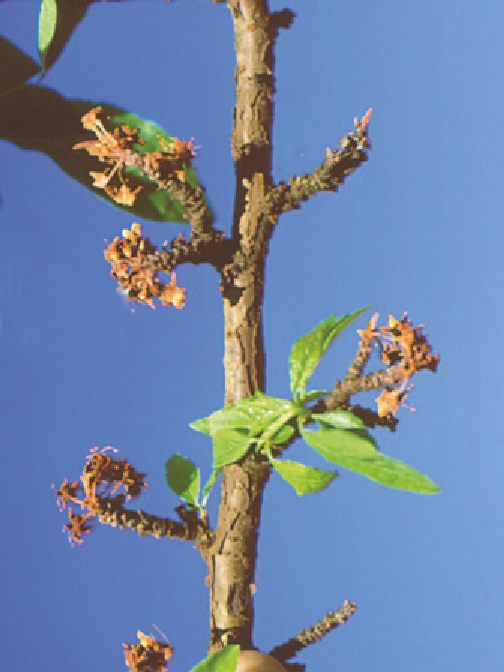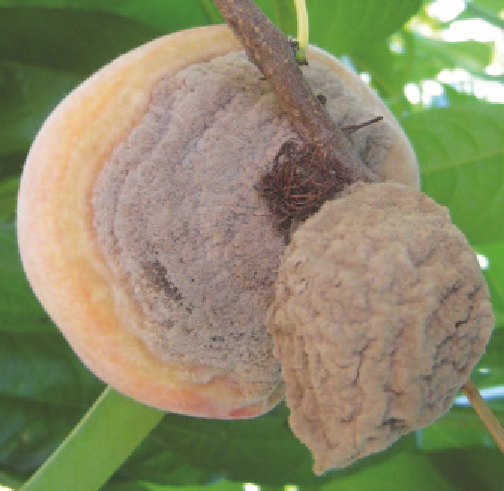Agriculture Reference
In-Depth Information
Fruit: small, round, brown spots enlarge rapidly in moist
conditions to cause a relatively firm, brown rot eventually
involving the whole fruit. The rotted portions soften as the
fruit matures and affected patches can ripen prematurely,
forming a gooey mass in wet weather. Light brown,
powdery clumps of spores, often arranged in concentric
rings, develop on the rotted areas. Infected fruit eventually
shrivel into mummies.
Source of infection and spread
Both brown rot fungi survive the winter in infected fruit
mummies, and diseased fruit stalks and twigs.
Monilinia
laxa
brown rot fungus also produces clumps of spores on
the diseased fruit stalks and twigs in late winter. In spring,
large numbers of spores develop and spread to the emerging
blossoms. If blossoms remain wet for more than 10 hours,
infection occurs and blossom symptoms develop. Twig
symptoms may follow.
Young fruit may be infected by spores from infected twigs
but symptoms develop only when the fruit mature.
Maturing fruit may be infected at any time during warm,
wet weather. Spores are spread by wind, rain and insects
such as dried-fruit beetles (
Carpophilus
spp.). Brown rot
Fig 17.11 Brown rot infection in peach.
Fig 17.12 Brown rot infection in peach with mummified fruit.
Symptoms
Blossom blight: affected blossoms turn brown and wilt
and the petals wrap around the centre of the f lower.
Gum may exude from the f lower stalk. Reduced fruit
set follows blossom blight, especially when caused by
M. laxa
.
Twig blight: a twig bearing infected blossoms may develop
light brown spots up to 30 mm long, often with gum. In
moist weather, masses of light brown spores form on the
blossoms and spots, particularly at the edge of the gum.
Leaves on affected twigs wilt, turn brown and fall and the
twigs begin to die back. In apricots, the green fruitlets may
also be attacked and develop a brown rot.
Fig 17.13 Brown rot is known as blossom blight in flowers.














